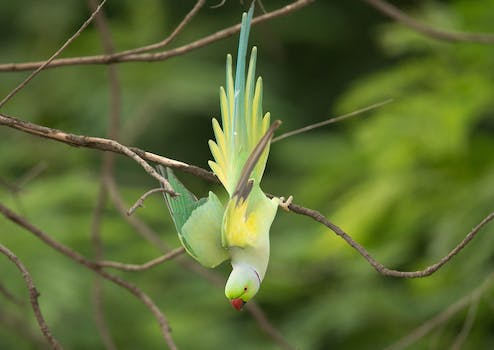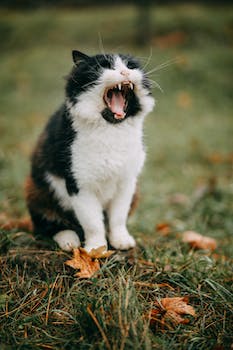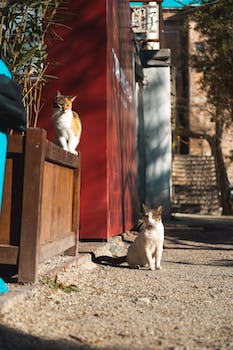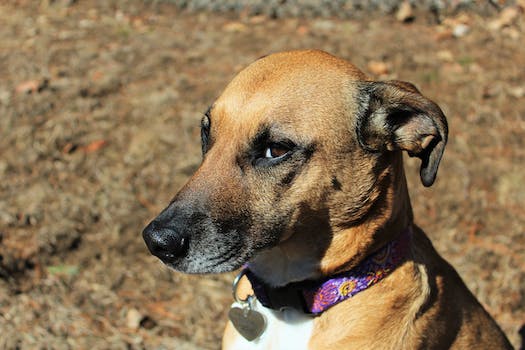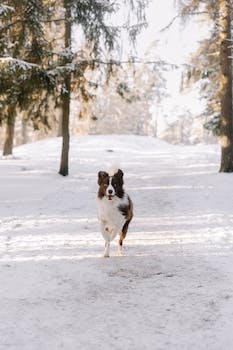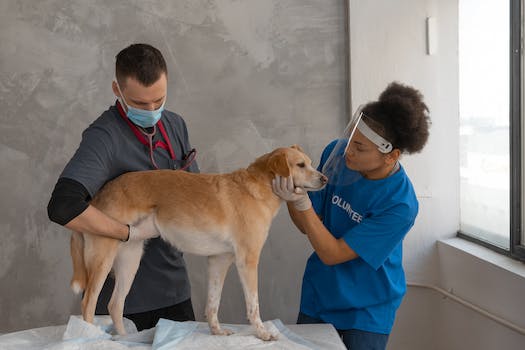

-
Table of Contents
Decoding the Enigma: Understanding the Relationship between Cats and Dogs - Unraveling the Bonds and Behaviors
Introduction
Decoding the Enigma: Understanding the Relationship between Cats and Dogs
The relationship between cats and dogs has long been a subject of fascination and curiosity. These two popular pets, with their contrasting personalities and behaviors, have often been portrayed as natural enemies. However, the reality is far more complex. In this article, we will delve into the enigma of the cat-dog relationship, exploring the factors that influence their interactions and shedding light on the dynamics that can lead to both harmony and conflict between these beloved animals.
The History of Cats and Dogs: Unraveling the Origins of Their Complex Relationship
Decoding the Enigma: Understanding the Relationship between Cats and Dogs
The history of cats and dogs is a fascinating tale that unravels the origins of their complex relationship. These two animals, so different in nature, have been intertwined throughout history, and understanding their dynamic can shed light on the bond they share today.
To truly comprehend the relationship between cats and dogs, we must delve into their historical roots. Cats, with their mysterious and independent nature, have been domesticated for thousands of years. Ancient Egyptians revered cats, considering them sacred creatures and even mummifying them alongside their owners. This reverence for cats continued throughout history, with cats being valued for their ability to control vermin populations in homes and on ships.
Dogs, on the other hand, have a long history of companionship with humans. They were domesticated much earlier than cats, with evidence of their presence dating back tens of thousands of years. Dogs were initially used for hunting and protection, but over time, they became valued members of households, providing loyalty and companionship to their human counterparts.
The intertwining of cats and dogs can be traced back to ancient times. In ancient Rome, dogs were often used to guard homes and livestock, while cats were kept to control rodents. This coexistence laid the foundation for the complex relationship we see today. As humans migrated and civilizations developed, cats and dogs traveled alongside them, adapting to new environments and forming bonds with their human companions.
Throughout history, cats and dogs have been depicted in art, literature, and folklore, further highlighting their intertwined existence. In many cultures, cats and dogs are seen as symbols of luck, protection, and companionship. Their presence in mythology and folklore showcases the significance they hold in human society.
Despite their differences in nature, cats and dogs have managed to form unique bonds with humans. Dogs, with their pack mentality, are naturally inclined to form strong attachments to their human families. Cats, on the other hand, are more independent and selective in their affections. However, both animals have the capacity to form deep emotional connections with their human counterparts.
Understanding the relationship between cats and dogs goes beyond their historical roots. It also involves recognizing their individual personalities and needs. While dogs thrive on social interaction and physical activity, cats prefer a more solitary and relaxed lifestyle. This fundamental difference in their nature can sometimes lead to conflicts within households, but with proper understanding and care, cats and dogs can coexist harmoniously.
In conclusion, the relationship between cats and dogs is a complex and fascinating one. Their historical roots, intertwined existence, and individual personalities all contribute to the bond they share with humans. By understanding their history and unique needs, we can foster a harmonious coexistence between these two beloved pets. Whether it's a dog's loyalty or a cat's independence, both animals bring joy and companionship to our lives, making the enigma of their relationship all the more intriguing.
The Science Behind Cats and Dogs: Exploring the Psychological and Behavioral Dynamics

Decoding the Enigma: Understanding the Relationship between Cats and Dogs
The Science Behind Cats and Dogs: Exploring the Psychological and Behavioral Dynamics
Cats and dogs have long been considered as natural enemies, with their contrasting behaviors and temperaments. However, recent scientific research has shed light on the complex dynamics between these two popular pets. By delving into the psychological and behavioral aspects of cats and dogs, we can gain a deeper understanding of their relationship and perhaps debunk some common misconceptions.
One key factor in understanding the relationship between cats and dogs lies in their evolutionary history. Dogs, as descendants of wolves, are pack animals with a strong social structure. They have a natural inclination to form social bonds and seek companionship. On the other hand, cats are solitary hunters, descended from solitary wildcats. They are more independent and self-reliant. These fundamental differences in their evolutionary backgrounds can influence their interactions with each other.
Another important aspect to consider is the role of socialization. Both cats and dogs can be socialized to live harmoniously with each other, but the timing and method of socialization can greatly impact their relationship. Early exposure to each other during the critical socialization period, which is typically between 3 and 14 weeks of age, can increase the likelihood of positive interactions. Properly introducing them to each other in a controlled and gradual manner can also help establish a foundation of trust and familiarity.
Understanding the body language and communication signals of cats and dogs is crucial in deciphering their interactions. Dogs often use body postures, facial expressions, and vocalizations to convey their intentions and emotions. Cats, on the other hand, rely more on subtle body language cues such as tail movements, ear positions, and eye dilation. By being able to interpret these signals, pet owners can better gauge the dynamics between their cats and dogs and intervene if necessary.
One common misconception is that cats and dogs cannot form close bonds with each other. However, numerous studies have shown that cats and dogs can indeed develop strong social relationships. These relationships are often based on mutual respect, trust, and companionship. In some cases, cats and dogs may even engage in social grooming, play, and sleeping together. These behaviors indicate a level of comfort and acceptance between the two species.
It is important to note that not all cats and dogs will get along. Individual personalities, past experiences, and the specific circumstances of their introduction can all influence their compatibility. Some cats may be more tolerant of dogs, while others may be more territorial and prefer to keep their distance. Similarly, some dogs may have a higher prey drive, making them more likely to chase or harass cats. It is crucial for pet owners to assess the personalities and needs of their pets before attempting to introduce them.
In conclusion, the relationship between cats and dogs is a complex interplay of evolutionary history, socialization, body language, and individual personalities. While they may have inherent differences, cats and dogs can form strong bonds and live harmoniously together. Understanding the psychological and behavioral dynamics between these two species can help pet owners create a positive and enriching environment for their furry companions. By decoding the enigma of the cat-dog relationship, we can foster a greater appreciation for the unique dynamics that exist between these beloved pets.
Nurturing Harmony: Practical Tips for Fostering a Positive Relationship between Cats and Dogs
Decoding the Enigma: Understanding the Relationship between Cats and Dogs
Cats and dogs are often portrayed as natural enemies, but the truth is that they can actually form strong bonds and live harmoniously together. While it may seem like an enigma, understanding the dynamics of their relationship can help pet owners foster a positive environment for both their feline and canine companions. In this section, we will explore practical tips for nurturing harmony between cats and dogs.
First and foremost, it is important to introduce cats and dogs to each other gradually. Sudden introductions can lead to fear and aggression, which can set a negative tone for their relationship. Start by allowing them to sniff each other's scents through a closed door. This will help them become familiar with each other's presence without direct contact. Over time, you can gradually increase their exposure to each other by using a baby gate or a crate. This controlled environment allows them to observe and interact with each other while still maintaining a sense of safety.
Another crucial aspect of fostering a positive relationship between cats and dogs is providing each pet with their own space. Cats are known for their independent nature and need a place where they can retreat to when they feel overwhelmed. This can be a separate room or a high perch where they can observe their surroundings. Dogs, on the other hand, require their own designated area for eating, sleeping, and playing. By respecting their individual needs for personal space, you can prevent potential conflicts and ensure a peaceful coexistence.
Additionally, it is essential to establish a routine that includes quality time with each pet. Cats and dogs have different socialization needs, and neglecting one for the other can lead to jealousy and resentment. Set aside specific times for play, exercise, and affection for both pets. This will not only strengthen the bond between you and your furry friends but also prevent them from seeking attention in negative ways.
Proper training is also crucial in maintaining a harmonious relationship between cats and dogs. Dogs, being pack animals, are more inclined to follow commands and respond to training. Teaching them basic obedience commands such as "sit," "stay," and "leave it" can help prevent them from chasing or harassing the cat. Similarly, cats can also be trained to understand boundaries and respond to cues. Reward-based training methods work best for both species, as they encourage positive behavior and strengthen the bond between pet and owner.
Lastly, it is important to monitor their interactions and intervene when necessary. Even the most well-behaved pets can have moments of tension or misunderstandings. Watch for signs of stress or aggression, such as hissing, growling, or raised hackles. If you notice any signs of discomfort, separate the pets and redirect their attention to something positive. This could be a treat, a toy, or a game that they both enjoy. By addressing potential conflicts early on, you can prevent them from escalating into more serious issues.
In conclusion, understanding the relationship between cats and dogs is the key to fostering a positive and harmonious environment for both pets. By introducing them gradually, providing individual spaces, establishing a routine, implementing proper training, and monitoring their interactions, pet owners can create a peaceful coexistence between their feline and canine companions. With patience, consistency, and love, cats and dogs can overcome their differences and form lifelong bonds that enrich their lives and ours.
Q&A
1. What is the Enigma when it comes to the relationship between cats and dogs?
The Enigma refers to the complex and often unpredictable dynamics that exist between cats and dogs.
2. How can one decode the Enigma and understand the relationship between cats and dogs?
Decoding the Enigma involves observing their behavior, body language, and interactions to gain insights into their relationship dynamics.
3. Why is understanding the relationship between cats and dogs important?
Understanding their relationship helps pet owners create a harmonious environment, prevent conflicts, and ensure the well-being of both cats and dogs in the household.
Conclusion
In conclusion, decoding the enigma of the relationship between cats and dogs reveals a complex dynamic that is influenced by various factors. While cats and dogs are often portrayed as natural enemies, many instances demonstrate that they can coexist peacefully and even form strong bonds. Understanding their individual behaviors, socialization, and proper introductions can help foster a harmonious relationship between these two popular pets.

